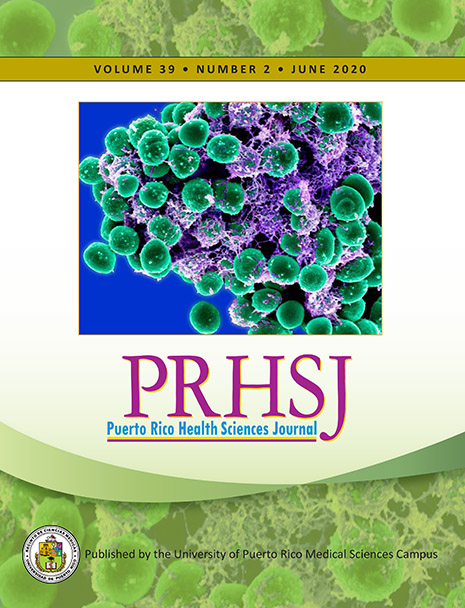Resumen
Objective: Our goal was to evaluate the intraoperative laboratory analysis of cerebrospinal fluid (CSF) aspirated from the myelomeningocele (MMC) sac prior to the repair to determine if there was bacterial growth in the culture. Methods: This was a retrospective analysis of the CSF cultures of 45 MMC patients operated on during the years of 2002 to 2013 at the University Pediatric Hospital. Before repairing the defect, the sac area was cleaned and three milliliters of CSF were drawn and sent for analysis for red blood cells, white blood cells, glucose level, protein level, chloride level, gram stain and culture. The CSF sample results were analyzed for irregularities in the values before proceeding with placement of a ventricular shunt. Results: All the CSF samples that were studied had at least 1 abnormal value in their results, even though none grew any pathogens in the cultures analyzed. Conclusion: Upon CSF analysis, we found increased levels of CSF protein and other abnormal values in this population; however, none of the cultures grew any pathogens. This finding is an important tool in the evaluation of the possible etiologies of and therapeutic approaches for future shunt problems in this group of patients.
Authors who publish with this journal agree to the following terms:
a. Authors retain copyright and grant the journal right of first publication with the work simultaneously licensed under a Creative Commons Attribution License that allows others to share the work with an acknowledgement of the work's authorship and initial publication in this journal.
b. Authors are able to enter into separate, additional contractual arrangements for the non-exclusive distribution of the journal's published version of the work (e.g., post it to an institutional repository or publish it in a book), with an acknowledgement of its initial publication in this journal.
c. Authors are permitted and encouraged to post their work online (e.g., in institutional repositories or on their website) prior to and during the submission process, as it can lead to productive exchanges, as well as earlier and greater citation of published work (See The Effect of Open Access).
